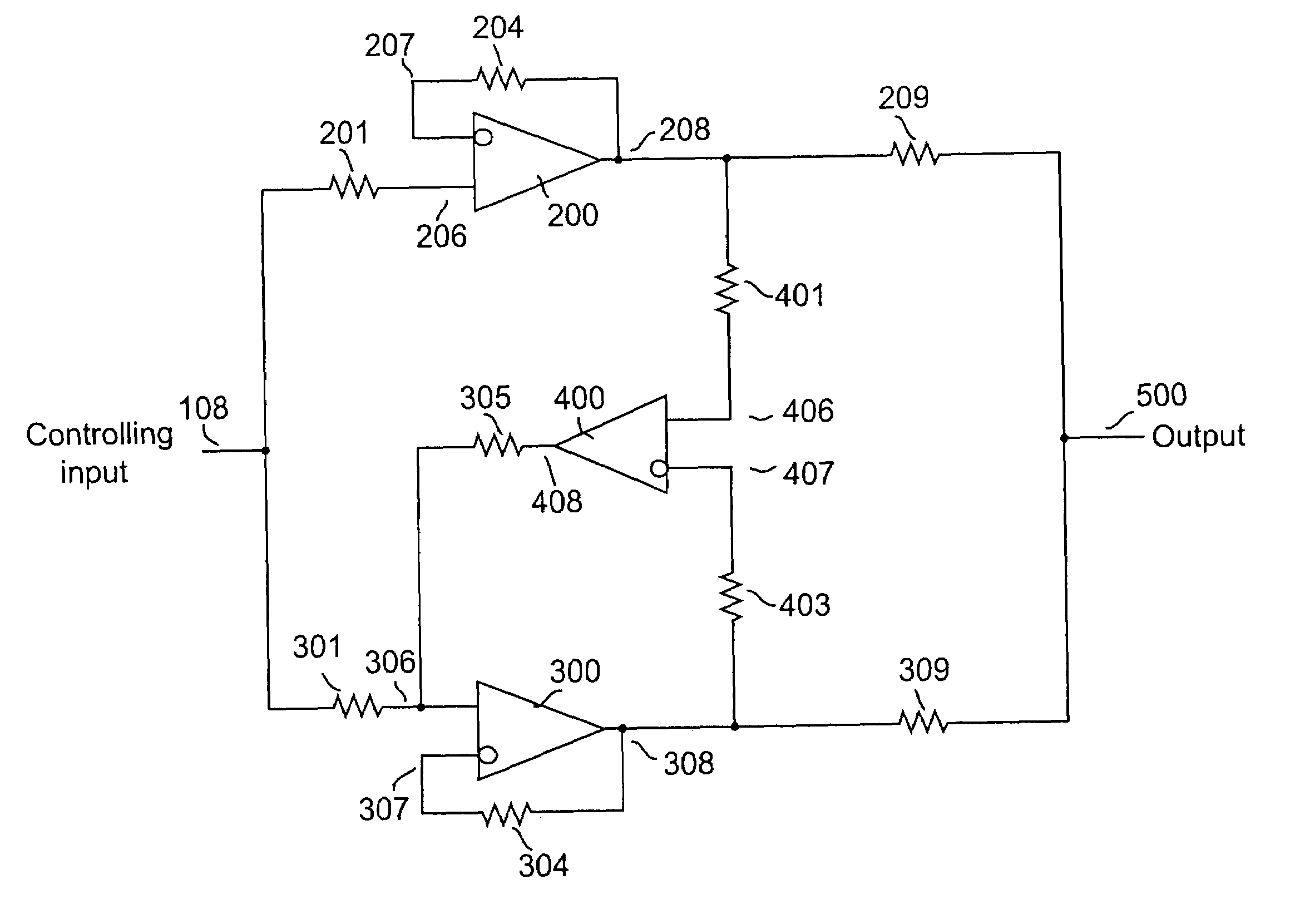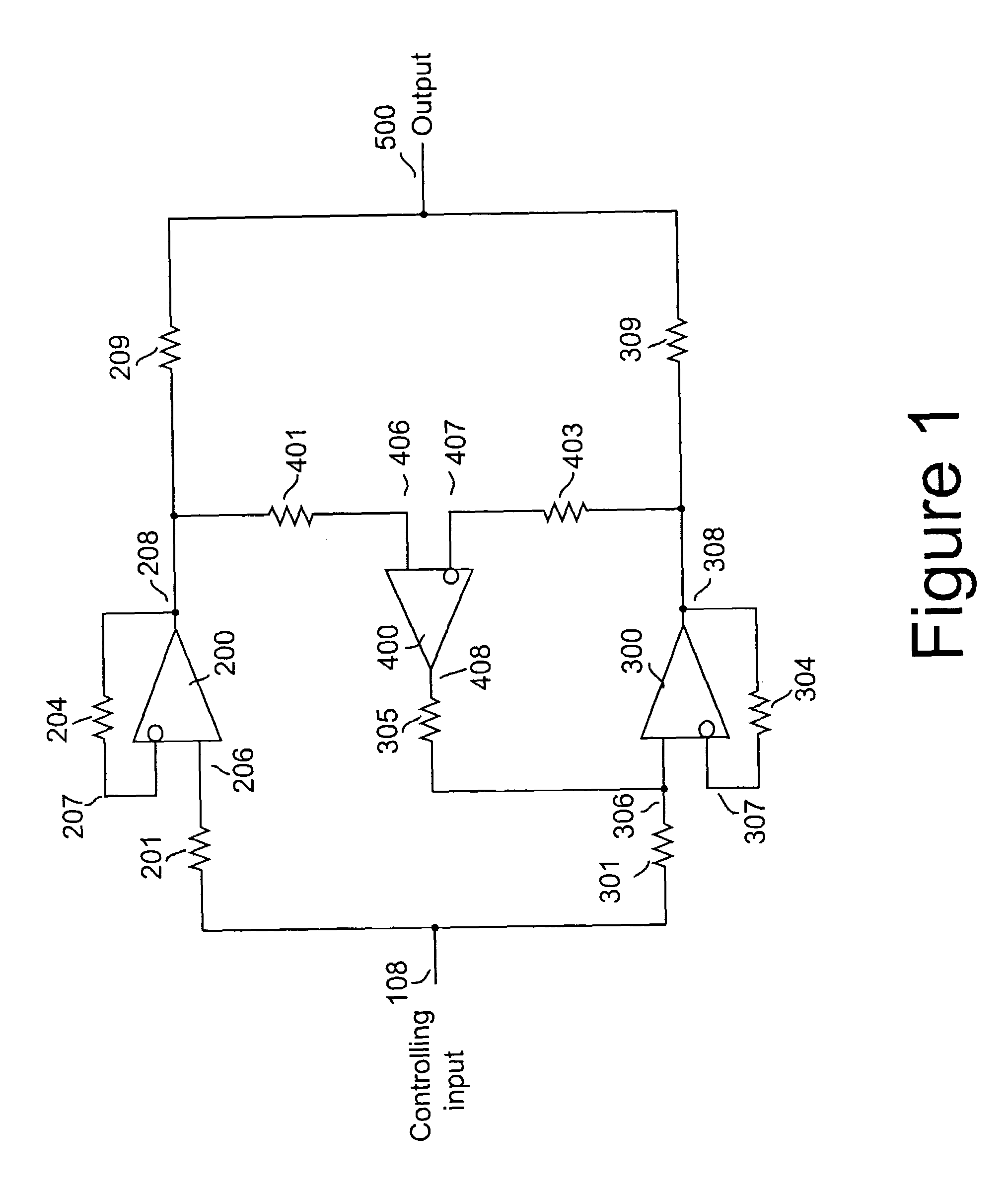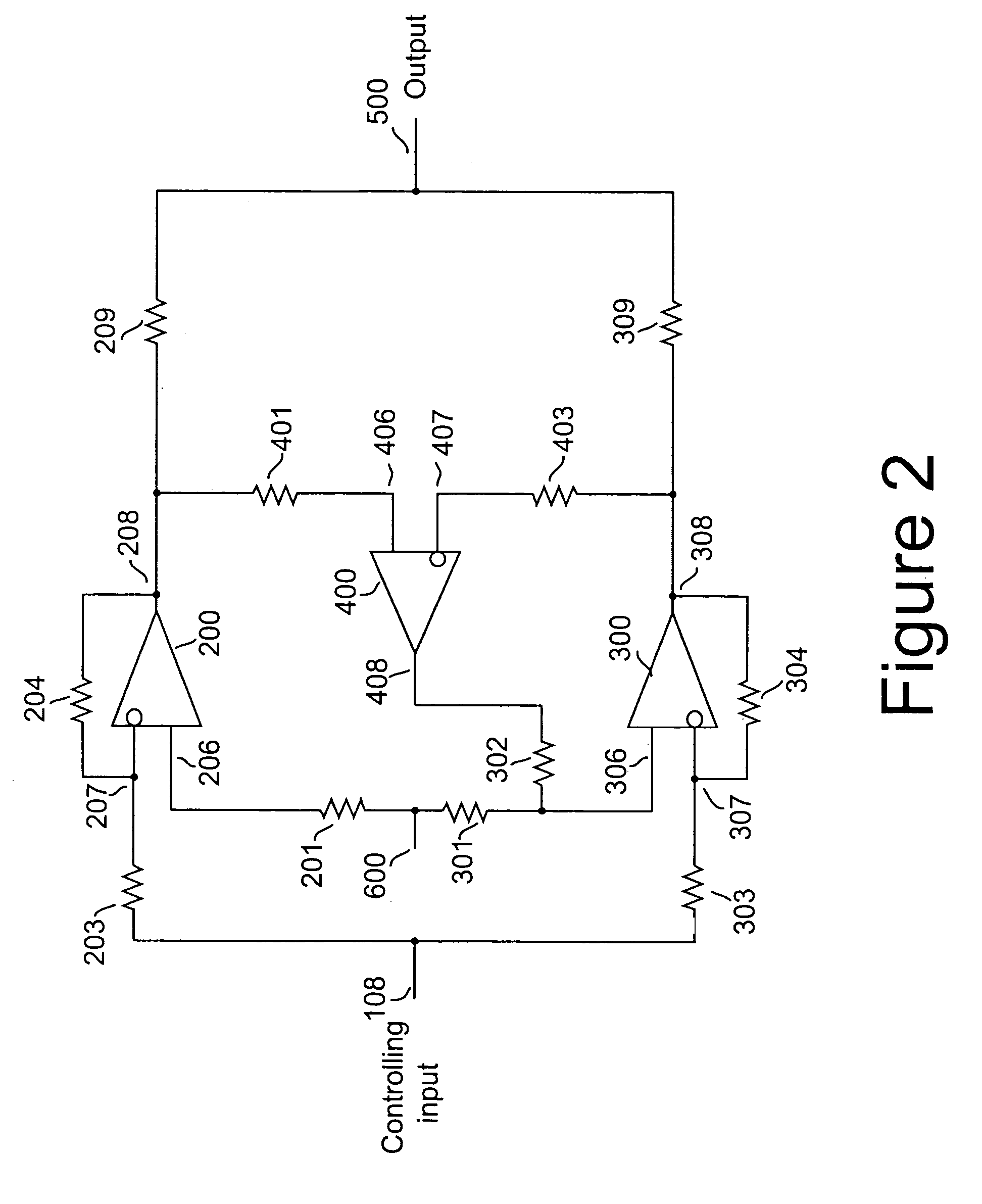Servo balancing among driver devices
a driver device and servo technology, applied in the field of amplifiers, can solve problems such as manifested amplifier outputs, and achieve the effect of improving the tracking accuracy of each servo amplifier
- Summary
- Abstract
- Description
- Claims
- Application Information
AI Technical Summary
Benefits of technology
Problems solved by technology
Method used
Image
Examples
third embodiment
[0049]A third embodiment may be achieved by a slight alteration of the servo amplifier configuration disclosed above, whereby the servo feedback is applied to the inverting input of the associated slaved driver amplifier, as shown schematically for a pair of driver sections in FIG. 3. Note that when feedback is applied to the inverting input of the slave driver, the relative polarity of the servo amplifier's input connections must be reversed.
[0050]Amplifier 200 is operative as an inverting amplifier by virtue of the connection of the input control signal 108 through resistor 203 to inverting input 207 and the feedback to input 207 through resistor 204 from output 208. The gain of this section is determined in the conventional manner by the ratio of resistor 204 to resistor 203. Resistor 201 is optional, and may be included to ensure circuit stability. However, if stability is not an issue, a direct connection may be used in place of resistor 204 to reduce noise. Sense resistor 209 ...
fourth embodiment
[0054]A fourth embodiment employs differential amplifiers configured to serve as non-inverting driver amplifiers. Servo feedback is applied to the inverting input of each slave, while the control input signals is applied to the non-inverting inputs of every driver amplifier, as shown schematically in FIG. 4 for a pair of drivers. Here again, when servo feedback is applied to the inverting input of the slave amplifier, the relative polarity of the associated servo amplifier's input connections must be reversed.
[0055]Amplifier 200 receives its controlling input from node 108, through resistor 201 connected to non-inverting input 206, and is operative as a non-inverting driver. Local feedback is conveyed from output 208 through resistor 204 to inverting node 207. Resistor 201 may be replaced with a direct connection if it is not needed to ensure stability. As is known in the art, the gain may be adjusted to a value greater than unity by adding a signal path between the inverting input ...
PUM
 Login to View More
Login to View More Abstract
Description
Claims
Application Information
 Login to View More
Login to View More - R&D
- Intellectual Property
- Life Sciences
- Materials
- Tech Scout
- Unparalleled Data Quality
- Higher Quality Content
- 60% Fewer Hallucinations
Browse by: Latest US Patents, China's latest patents, Technical Efficacy Thesaurus, Application Domain, Technology Topic, Popular Technical Reports.
© 2025 PatSnap. All rights reserved.Legal|Privacy policy|Modern Slavery Act Transparency Statement|Sitemap|About US| Contact US: help@patsnap.com



